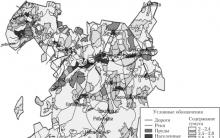For years, virtual and augmented reality has been the product of science fiction writers. Now these two technologies have become quite a reality. Today, despite the mountain of skeptics, this technology is ready to be adopted by a mass audience, providing it with a “new medium” for the experience.
Back in 2014, VR pioneer Chris Milk explained the deep power that virtual reality carries:
“You are reading a book: your brain reads letters printed in ink on paper and moves them into this world. You are watching a movie: you see images inside a rectangle while you are sitting in a room. And your brain translates them into your world. You connect to it, even if you do not realize that it is unreal, but all because you have taken into the habit of the preset disbelief. By using virtual reality, you are, in effect, hacking into your brain's visual-audio system, giving it a set of conditions that are close to those that allow it to perceive the environment as truth. Instead of being blocked by your distrust, you start to believe in what is happening around. "
What does new technology mean for fashion?
In the last decade, the fashion industry has grown several times, and it has managed to touch the developing technology. For some brands, virtual and augmented reality looks like a powerful new channel for digital growth.
“When someone thinks to bring VR into this industry, then I always think that it will be even more important event than invention cell phones in the global system of things. However, it took 20 years for the adoption of e-commerce to reach an inflection point in this area. I guess it will take VR the same amount of time to truly become your everyday tool, just like our mobile phones. ”
But the momentum for VR and AR technology is happening quickly. At the end of last year, HTC Vive announced the existence of a virtual reality venture capital fund that included 27 firms. The initiative was able to accumulate US $ 10 billion. Last October, the digital distribution Steam platform reported that the number of VR users is increasing daily by 1000. At that time, it had more than 600 VR-applications. Giants such as Facebook and Spectacled are also interested in the new technology.

At this early stage of development, it is difficult to predict the size of the market in the future. But according to Goldman Sachs, revenue from AR and VR-related hardware and software is expected to grow from US $ 80 billion to US $ 182 billion by 2025.
Virtual and augmented reality will certainly become a powerful channel for interaction between the brand and the consumer, just as it once became such a tool. mobile devices and social media today. But current pricing ($ 600 for the Oculus Rift and $ 800 for the HTC Vive) will stifle mass adoption by consumers.
At the same time, there are many opportunities for using VR and AR in the design and fashion industry.
“Obviously, the first step in the fashion industry is sketching and material selection. We work with big amount brands and already now we have various scenarios for this technology. You will not only get a digital experience, but also save time and money, ”says Ari Bloom, CEO of Avametric in San Francisco.
Virtual simulation of a storeroom may also be in demand in the retail area.
"In VR, you can work in two different areas at once, and it's really impressive."

It's worth noting that the ShopperMX platform, which InContext Solutions is working on, allows retailers to experiment with signage, product demo and layout without the time and physical resources involved. Thus, virtual reality at one point replaces everything that would be necessary to test all experimental elements in the physical world.
Over the next decade, virtual reality will have a phenomenal impact on the fashion industry. She starts to do it now. In October 2015, Tommy Hilfiger became the first major retailer to offer a VR headset for visitors to its stores. This year, American luxury brand Coach installed 10 VR headsets in 10 central stores across the US to give users full access to their show.
The Gap are also experimenting with virtual reality. The retailer introduced augmented reality dressing room last month. It allowed consumers to digitally try on things. The experience was created by Bloom and Avametric in collaboration with Google, but has its drawbacks. For starters, it only works with smartphones that support Google Tango technology, which are not yet widespread on the market. After this, the popularity and the number of AR applications that allow you to try on clothes increased dramatically.

Nor is it surprising that beauty brands have also armed themselves with virtual reality to promote their products. Last year, Sephora, Charlotte Tilbury and Rimmel have already released AR applications that allow you to virtually “try on” a particular makeup on your face using your mobile phone.
But are these AR apps really useful for business? Yes. This is proven by the research conducted by Metail. Releasing an AR app can boost sales of a brand's products by 22 percent, according to a research company.
On this moment there are many opinions that virtual and augmented reality are in their infancy. Once upon a time, e-commerce went the same way 10 years ago. The fashion industry simply did not accept her, and luxury brands refused to sell their products online.
If the consumer finally accepts virtual and augmented reality, then brands simply have no choice but to follow their customers, adapting to them.
Well, to be aware of everyone latest news from the world of virtual reality subscribe to our Telegram!
Together with the product from the site
Free technical support and consultation Our store specializes in the sale of complex technical devices, and we perfectly understand how difficult it is to put the purchased device into operation without the support of a technical specialist, to enjoy the purchase here and now, without long attempts to fix any problem that has arisen. By purchasing a product on the site, you get free technical support 7 days a week. Engineers technical support will be happy to help you with all questions related to the operation of the equipment purchased in our store *.
Working hours of the technical support department: on weekdays from 10:00 to 19:00, on weekends from 10:00 to 22:00. By purchasing goods from us, you can be sure that you will not be left alone with technical problems, if any.
* The area of free technical support includes technical advice by phone and e-mail related to the operation of equipment purchased from the store site. Remote configuration of the client's equipment or equipment purchased from our store is carried out within the framework of paid services on setting.
Loyal customer discounts
Automatic entry to the 2019 annual Buyer of the Year award We believe in New Year's magic and love to make gifts to everyone who, like us, sees off the old year with a tremulous feeling and meets the new one. We are convinced that you need to see off the old year in an excellent mood, filled with feelings of joy and gratitude for all the good things that happened in the past year, so that New Year was even more generous with luck and success. That is why on the last day of the outgoing year we are holding an award-lottery New Year's gifts, the owners of which become the customers of our store. After all, a new year without gifts, like winter without snow, is a strange phenomenon for our capital :)
Rules: 1. In the lottery 3 gifts will be drawn 2. All orders that were created and successfully completed in 2019 participate in the competition 3. Each order is assigned a number, and using a random number generator on 31.12.2019 at 12:00 p.m. at noon we will determine the 3 lucky ones. 4. The main gift goes to the last winning order number 5. The results will be published at 13:00 in our social networks, as well as we will make a personal notification of each client, whose order was in the list of lottery winners.
A gift for your opinion about us Share your opinion about us on Ya.Market, and as a gratitude we will make you a cashback of 100 rubles for a purchase in our store.
Virtual Reality technologies no longer surprise anyone, because people are accustomed to the fact that they can immerse themselves in another space. However, do you know which of the senses that help a person to fully understand reality are not transmitted through glasses and a controller? More on this and much more - below!
One of the most popular trends this year is the virtual reality suit. It originates in 1994 with Aura Interactor, which allowed only audio ambience to be conveyed. More innovative models that already tracked movements and mimicked sensations began to appear after 2012. These include ARAIG, Teslasuit, HAPTIKA. They are all designed differently, but can be used in the same way to create a new gaming environment.
What it is?
The invention is a costume that abstracts a person from the outside world. It can be made in the form of a vest, bracers or overalls. Its principle of action is based on an electro-tactile feedback system that allows the player to fully feel their presence in VR.
Principle of operation and internal structure
Before diving into explanations about how the product works, it's worth mentioning a little about the feelings of people. Glasses and helmets allow the user to see and hear using simulated hearing and vision. But to provide organic immersion, you also need a sense of touch.
Feel everything that happens to the body in the game - the blows of opponents, a light breeze, a collision with a wall or an arrow hit. This is the main purpose of universal clothing.
Using several dozen haptic channels for transmitting an electrical impulse built into the device, the system affects the nerve endings of certain parts of the player's body. ARAIG uses 16 sensors on the front and back, and 8 on each side.
In Teslasuit, the system is more advanced, it covers 22 large areas on the body, not limited to points. This creates an imitation of touch. The tactile sensation is specifically limited by the computer to avoid damage.
It also uses the Motion Capture system, which allows you to capture the user's movements and project them into the game. Teslasuit employs 11 grippers.
Production technology
Each company uses its own development methods, therefore appearance and models may vary. Sensors that function at the tactile level remain unchanged. They can be integrated into a full suit, similar to a diving suit, or into a vest with several additional elements.
Haptic recoil in all models is caused by acting on nerve endings. The more such sensors are installed, the more areas of the body the system will be able to cover.
Advantages and disadvantages
- Feeling of complete immersion;
- An innovative play space for players;
- A new level of interaction with virtual reality;
- Breakthrough in the field of IT.
- Limitation and health risks in the form of excessive stress on nerve endings;
- High production costs lead to a high cost of the product, which negatively affects its sale and feasibility.
approximate price
The price issue is quite acute here. Developers use a lot of expensive sensors, so the cost of the product rises to pay off the release.
However, it's not all bad. For example, simple models that work on the Kinect principle, that is, acting as a contactless controller, can be purchased in the range from 35 to 40 thousand rubles. A glove that recognizes movements in virtual space can be bought for 40 thousand rubles. The cost of gadgets made of electronic fabric, as well as those with a large set of functions, starts from 100 thousand rubles.
Which companies produce VR suits
Such exoskeletons are still at the design stage, so not every company creates them:
- TeslaSuit;
- YEI Technology;
- Holosuit;
- Hardlight VR.
Conclusion
Such achievements are surprising and amazing. Just think of how a person feels, hears and sees hand movements in the digital world. Anyone interested in virtual reality should try on such equipment.
We hope that today you have discovered a new and amazing invention. Subscribe and share posts, as well as links to articles on social networks, to learn even more news from the world of information technology.
NullSpace VR / Kickstarter
American startup NullSpace VR has developed a haptic suit designed to convey to the user the sense of touch of objects in virtual reality. To finance the serial production of the gadget, a crowdfunding campaign has been launched on Kickstarter.
In its modern form, VR content involves the use of only glasses and a controller, so the user has only sight and hearing as feedback, but he cannot physically feel contact with virtual objects. There are a number of additional gadgets for touching virtual objects, but most of them work only with a limited area - for example, gloves-controllers with feedback (,) only allow you to touch virtual objects with your hands. use only hands.
The American-designed Hardlight VR suit weighs 1.5 pounds and is designed for the upper body. Sensors and vibration motors are fixed on the surface of the suit, which are responsible for different groups muscles. The user in Hardlight separately senses a touch or hit in the stomach, chest, arms, back and shoulders - in total, 16 vibration modules are responsible for the haptic response.
In addition to haptic feedback, the VR suit is used to track the user in virtual reality - using built-in sensors, the device tracks the position of the user's hands relative to the VR headset. In this case, the data on the position of the arms is also used by the suit for the correct positioning of the torso in virtual reality.
The suit works with HTC Vive and Oculus Rift VR headsets and connects to a computer via USB. To purchase Hardlight, you need to donate through the Kickstarter crowdfunding campaign from $ 399. Delivery of the devices to the first customers is scheduled for September 2017.
In addition to Hardlight, there are other suits with haptic recoil, but they cover a smaller area of the body, and also cannot track hand movements, therefore they are poorly suited for virtual reality: the Kor-FX and Subpac vests. It was also reported about the development of VR-OBE, however, the manufacturer plans to release a limited batch of devices for developers at the first stage and it is not known whether a custom version will be released.
In addition to clothes with haptic modules, there are more unusual devices that add believability to the VR world: which, using galvanic vestibular stimulation, convey to the user a sense of movement in the virtual world,











The best board games - top from the Game expert New board games
Games Akinator: Internet genius play online
Fantasy Battle rules Fantasy battle game rules
Classification of aviation charts
Collectible Card Game Berserker: Domestic Hero in the TCG World